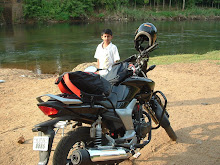Monday, June 28, 2010
Management of change - typical story
Management of Change is a specialized area in the HRM practice. Often people specialize in the art of managing change. Because an external person can look at an organization without much of filters and bias such people are hired as consultants for the purpose of managing change often termed as an Organisation Development consultant or OD interventionist or facilitator.
In coming to understand the cases I felt that the story could be much simpler. The milestones are highlighted and is typical of the OD process.
The typical story runs thus
Once upon a time there was a company. It was growing very rapidly. But as it was growing it lost focus in certain areas. The different stakeholders had different demands. So the company was focusing on short term objectives and lost sight of medium and long term markets and activities. In short the company was largely reactive and not proactive, always in a trouble shooting mode.
At times the company had to be very selective in the projects , most of the time it could not. When one pressure was over another started … When the pressure mounted the customer was king and the employees felt like harassed beggars The management felt the employees were losing creativity.
Some creativity had to be infused. De Bono’s techniques were used, but employees still felt they were not rewarded for the trouble. At that time rewards were all individual but something was to be done to make it organisational. Although lot of knowledge was lying around they were not being shared. So a lot of overlap took place in work and sometimes resulted in rework.
The company’s image was also a problem. It existed almost for 30 years but people were not aware of it. Because of this fresh graduate students refused to join. By such and such year a need for change was felt. Systems and people were sometimes in collision. Strategy, structure , technology and culture were needed to be brought together. To align these the company felt the need for some champions. They also appointed certain consultants who revalidated and redefined the concerns.
To simplify understanding the following terms (a model) were used: Voice of Wealth, of Employee, of Customer and of Technology. Balancing the tension across these became a task
To make it more attractive the OD facilitator made a picture- like this. Scenario building was a favourite past time in those days. It spoke of ‘what the company can be’. The OD facilitator was interested in challenging the employees to think out of the conventional ways. Everybody had to do dialogue and listen.
After dialogue and listen they again built various scenarios. Scenarios were possible future pictures of the company. Senior Managers also started playing around and building scenarios. They sat together and started telling stories about the past, had visions of the future, who were the enemies, drew maps of the enemy territory, the need for rearranging the weapons such as business models, products and support functions.
Also the critical weapons and the appropriate deployment etc were discussed and laid down. It was felt that there would be a struggle necessary to achieve the future scenario. So the management and the OD specialist built another diagram. Some systems such as PM and Appraisal were suggested by the OD expert . Special fun sessions like workshops, teach train transfer were pastimes for the OD experts.
Words like goal setting , systems perspective, institutionalising, goal orientation and PMS flew around the place. All workers were tagged with a collar called personal score card. The cards defined and reminded the workers their goals outputs etc even in their sleep. In addition another big thing called BALANCED SCORE CARD with voice as key. Corporate template was cascaded to individual level. Frameworks were plenty with KPAs leading to goals at unit level. Reviews were also plenty which criticised the way work was done. Published results and stated goals were tried to be linked to determine incentives. Words like ‘value add drivers’ tumbled from the ceilings.
Then everybody agreed strategy was important and everybody agreed on goals by function, geography , delivery and relationships. All ensured performance aligned with the big vision of the organization. To push people upwards to the ceiling career planning and mentoring were used.
Assessment and coaching were brought together to further role alignments. Succession plan was brought for satisfaction and talent. All through business leaders dialogued and shouted (communicated) to evolve mission , change, teamwork and individual growth at the top of their voices.
Then the management drew another picture. A new propellor called PROPEL was used. SPIRAL DYNAMICS was also introduced. Together they helped team alignment
Initiation, Awareness sessions and workshops, Gap analysis, Improvement plan and next steps were invited as special guests. Value cards were given to all. AEP was also introduced. At the peak of the programme there were 7 initiatives running at the same time. Mirrors called Darpan were positioned at critical locations. Cultural perspectives were the outcome and they were named ASI and CSI. Cricket match etc were done transparent culture was encouraged. Increased awareness, focus on CSR, fun at work all resulted in team work. Team was better aligned . All resulted in customer satisfaction. At the end, a paradigm shift was noticed.
Subscribe to:
Post Comments (Atom)






















No comments:
Post a Comment